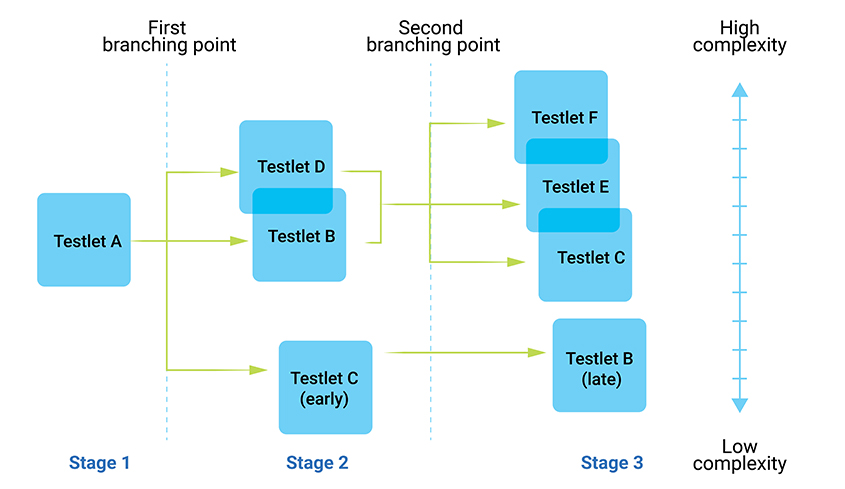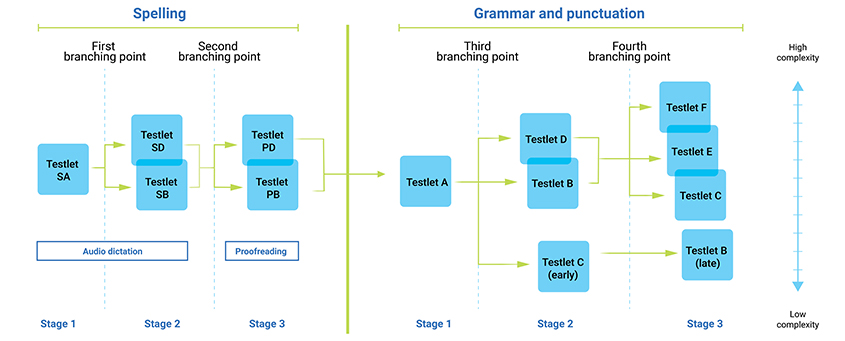Tailored tests
NAPLAN online reading, numeracy and conventions of language use a tailored test design. The tests automatically adapt to a student’s test performance and ask questions that match the student’s achievement level. Tailored testing allows all students to demonstrate their knowledge and encourages students to stay engaged with the test. Tailored testing also provides teachers and schools access to more targeted and detailed information on students’ performance in the assessment.
Reading and numeracy test design

Students at each year level start with a set of questions (testlet A). Each student’s answers in testlet A will determine the questions they see in the second testlet. These may be less complex (B) or more complex (D).
The student’s answers in the second testlet will determine the difficulty of questions in the final testlet: highest complexity (F), average complexity (E), lowest complexity (C). Students who receive a low score for testlet A move directly to testlet C and then complete testlet B.
NAPLAN results for each student are based on both the number and difficulty of the questions the student answered correctly. A student who completes a more complex set of questions is more likely to achieve a higher score, while a student who answers the same number of questions correctly, but follows a less complex pathway, will achieve a lower score.
Within the 3 testlets, the Years 7 and 9 numeracy test includes 2 sections: non-calculator and calculator. The online calculator is available to students after completing the non-calculator section of the test. Students will be advised that they cannot return to the non-calculator section once they move to the calculator section.
top
Conventions of language test design

The conventions of language test includes a spelling section and a grammar and punctuation (G&P) section, each with 2 branching points. A message will inform students that they cannot return to the spelling section once they move to G&P.
In reading, numeracy and conventions of language, branching messages (PDF 458 KB) between testlets advise students whether they may go back to previous testlets to change their answers, or not. Changing answers will not affect their branching but will affect their final score.
Benefits of tailored testing:
-
more precise measurement of student performance and greater differentiation of students, achieved by asking a wider range of questions without adding to the length of the test for each individual student
-
increased student engagement because the tests adapt to the student’s test performance
-
lower levels of discouragement among students who experience difficulty early in the test, as they are given questions of lower complexity, more suited to their performance. High-achieving students are given more challenging questions
-
potential to reduce anxiety in students who find NAPLAN challenging
-
a wider range of aspects of the curriculum can be tested. While each student will answer the same number of questions as in the paper tests, the number of questions that may be presented to students is larger.
top